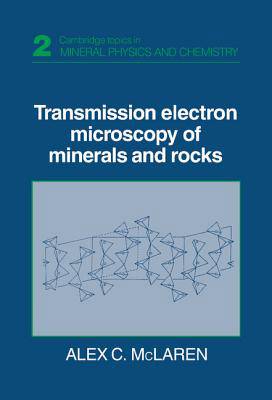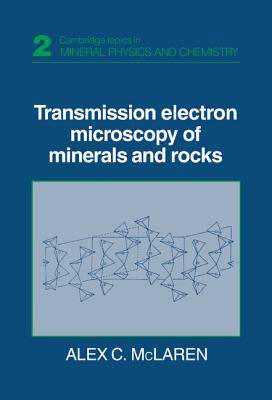
- Afhalen na 1 uur in een winkel met voorraad
- Gratis thuislevering in België vanaf € 30
- Ruim aanbod met 7 miljoen producten
- Afhalen na 1 uur in een winkel met voorraad
- Gratis thuislevering in België vanaf € 30
- Ruim aanbod met 7 miljoen producten
Zoeken
Transmission Electron Microscopy of Minerals and Rocks
Alex C McLaren
€ 282,95
+ 565 punten
Uitvoering
Omschrijving
Of the many techniques that have been applied to the study of crystal defects, none has contributed more to our understanding of their nature and influence on the physical and chemical properties of crystalline materials than transmission electron microscopy (TEM). TEM is now used extensively by an increasing number of earth scientists for direct observation of defect microstructures in minerals and rocks. Transmission Electron Microscopy of Rocks and Minerals is an introduction to the principles of the technique and is the only book to date on the subject written specifically for geologists and mineralogists. The first part of the book deals with the essential physics of the transmission electron microscope and presents the basic theoretical background required for the interpretation of images and electron diffraction patterns. The final chapters are concerned with specific applications of TEM in mineralogy and deal with such topics as planar defects, intergrowths, radiation-induced defects, dislocations and deformation-induced microstructures. The examples cover a wide range of rock-forming minerals from crustal rocks to those in the lower mantle, and also take into account the role of defects in important mineralogical and geological processes.
Specificaties
Betrokkenen
- Auteur(s):
- Uitgeverij:
Inhoud
- Aantal bladzijden:
- 400
- Taal:
- Engels
- Reeks:
- Reeksnummer:
- nr. 2
Eigenschappen
- Productcode (EAN):
- 9780521350983
- Verschijningsdatum:
- 26/04/1991
- Uitvoering:
- Hardcover
- Formaat:
- Genaaid
- Afmetingen:
- 157 mm x 231 mm
- Gewicht:
- 698 g

Alleen bij Standaard Boekhandel
+ 565 punten op je klantenkaart van Standaard Boekhandel
Beoordelingen
We publiceren alleen reviews die voldoen aan de voorwaarden voor reviews. Bekijk onze voorwaarden voor reviews.











